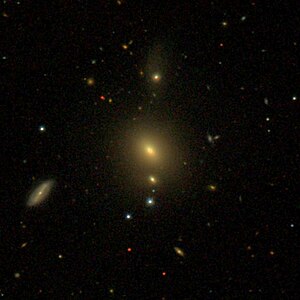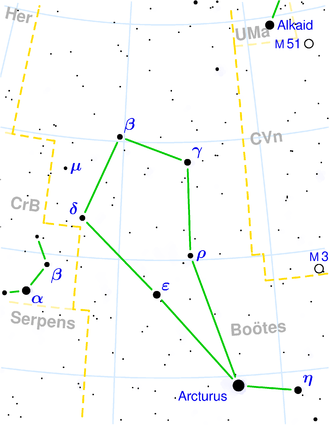NGC 5567
| Galaxy NGC 5567 |
|
|---|---|

|
|
| SDSS recording | |
| AladinLite | |
| Constellation | Bear keeper |
|
Position equinox : J2000.0 , epoch : J2000.0 |
|
| Right ascension | 14 h 19 m 17.6 s |
| declination | + 35 ° 08 ′ 17 ″ |
| Appearance | |
| Morphological type | S0-a |
| Brightness (visual) | 14.0 mag |
| Brightness (B-band) | 14.9 mag |
| Angular expansion | 1.1 ′ × 0.9 ′ |
| Position angle | 61 ° |
| Surface brightness | 13.9 mag / arcmin² |
| Physical data | |
| Redshift | 0.028450 +/- 0.000087 |
| Radial velocity | (8529 +/- 26) km / s |
|
Stroke distance v rad / H 0 |
(385 ± 27) x 10 6 ly (117.9 ± 8.3) Mpc |
| history | |
| discovery | John Herschel |
| Discovery date | April 3, 1831 |
| Catalog names | |
| NGC 5567 • PGC 51161 • CGCG 191-075 • MCG + 06-31-096 • 2MASX J14191759 + 3508168 • GALEX ASC J141917.58 + 350816.4 | |
NGC 5567 is a Lenticular galaxy from the Hubble type S0 / a in the constellation Bootes the northern sky . It is estimated to be 385 million light years away from the Milky Way and has a diameter of about 125,000 ly. It is likely to form a gravitationally bound galaxy pair with NGC 5568 .
In the same area of the sky are the galaxies NGC 5533 , NGC 5579 , NGC 5580 , NGC 5588 , among others .
The object was discovered on April 3, 1831 by John Herschel .
